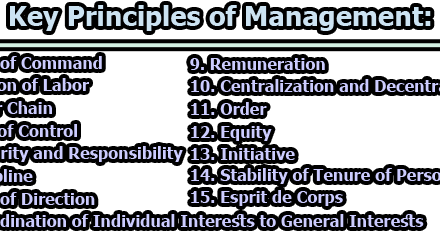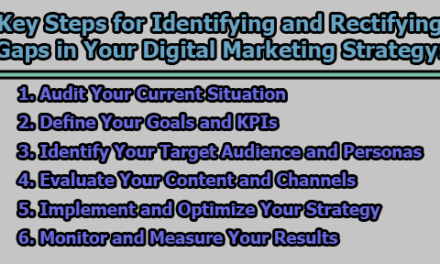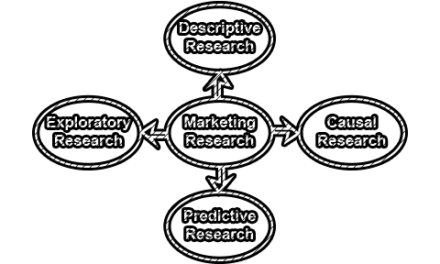Role of Competitive Analysis in Digital Marketing:
In today’s fast-paced digital landscape, businesses are constantly vying for the attention and loyalty of online consumers. To succeed in this highly competitive arena, companies need to employ a strategic approach to their digital marketing effort. Competitive analysis is a vital part of digital marketing, as it empowers businesses to understand their strengths and weaknesses, identify opportunities and threats, and ultimately improve their performance and positioning in the digital realm. In this article, we will explore the role of competitive analysis in digital marketing.
What is Competitive Analysis?
Competitive analysis is the process of researching, analyzing, and comparing your competitors’ digital marketing strategies, tactics, and results. It involves collecting and evaluating data on various aspects of your competitors’ online presence, including their website, social media, content, SEO, ads, email marketing, and more. The primary goal of competitive analysis is to gain insights into your competitors’ strengths, weaknesses, opportunities, and threats and use this information to inform your own digital marketing decisions and actions.
Why is Competitive Analysis Important?
The importance of competitive analysis in digital marketing cannot be overstated. Here are several reasons why it is crucial for businesses looking to succeed in the online space:
- Performance Benchmarking: Competitive analysis allows you to measure your performance against industry standards and your competitors. By understanding how you stack up against the competition, you can identify areas for improvement.
- Learning from Competitors: Analyzing your competitors’ successes and failures provides a wealth of knowledge that can inform your digital marketing strategy. This includes discovering new trends, innovations, and best practices in your niche.
- Strategic Positioning: Understanding your competitors’ value propositions, target audiences, positioning, and differentiation can help you find ways to stand out and appeal to potential customers. This knowledge enables you to develop a unique selling proposition.
- Anticipating Competitor Moves: Competitive analysis can provide insights into your competitors’ activities and responses, allowing you to anticipate their actions. This proactive approach can help you stay ahead in the market.
How to Conduct Competitive Analysis:
Conducting competitive analysis is not a one-size-fits-all endeavor; it requires a tailored approach based on your goals, resources, and industry. However, a general framework can be applied, consisting of several key steps:
- Define Objectives: Begin by defining your objectives. Determine what you want to achieve with the analysis and decide which aspects of your competitors’ digital marketing strategies to focus on.
- Identify Competitors: Identify your direct and indirect competitors. Compare factors such as size, market share, reputation, and offerings to create a comprehensive list.
- Collect Data: Collect data from various sources, including websites, social media profiles, content, SEO tools, ads platforms, email newsletters, reviews, and customer feedback.
- Analyze Data: Examine the collected data to uncover patterns, trends, and insights related to your competitors’ performance on various digital marketing metrics.
- Compare and Contrast: Compare your performance to that of your competitors. Identify strengths and weaknesses, as well as areas where you can differentiate your brand.
- Report and Act: Communicate your findings and recommendations to your team and stakeholders. Use this information to improve your digital marketing strategy and tactics.
Competitive Analysis Tools and Techniques:
To conduct competitive analysis efficiently and effectively, consider using various tools and techniques:
- SWOT Analysis: Conduct a SWOT analysis to compare your strengths, weaknesses, opportunities, and threats with those of your competitors.
- Competitor Matrix: Create a competitor matrix to differentiate yourself by comparing features, benefits, prices, and other attributes.
- Content Analysis: Assess your competitors’ content strategy, quality, quantity, frequency, formats, topics, keywords, and performance.
- SEO Analysis: Examine your competitors’ SEO strategy, including ranking, keywords, backlinks, technical aspects, and performance.
- Ads Analysis: Gain insight into your competitors’ advertising strategy, including platforms, keywords, ad copy, creative, budget, and performance.
- Social Media Analysis: Evaluate your competitors’ social media strategy, platforms, followers, content engagement, and performance.
- Email Analysis: Review your competitors’ email marketing strategy, including list frequency, subject lines, content, design, and performance.
Using Competitor Customer Feedback:
Gathering customer feedback from your competitors is an invaluable source of data for competitive analysis. This information can provide insights into customer satisfaction, loyalty, retention, pain points, needs, preferences, and expectations. Here’s how you can make use of this feedback:
- Identify Strengths and Weaknesses: Customer feedback can reveal your competitors’ strengths and weaknesses in serving their customers.
- Learn from Best Practices and Mistakes: Analyze customer feedback to understand what your competitors are doing well and where they may be falling short.
- Discover Unique Value Proposition: Customer feedback can help you uncover your competitors’ unique value propositions and positioning in the market.
- Identify Customer Segments and Personas: Explore the feedback to detect different customer segments and personas your competitors are targeting.
- Detect Problems and Complaints: Customer feedback can highlight recurring issues and complaints, enabling you to address them proactively.
- Spot Opportunities and Suggestions: Look for suggestions and opportunities that your competitors may have missed.
Competitor customer feedback can be collected from various sources, including reviews, ratings, testimonials, comments, surveys, polls, forums, blogs, social media platforms, and other online channels. Tools like Google Alerts or Mention can help you monitor your competitors’ customer feedback online.
In conclusion, competitive analysis is a must-have for digital marketing success. It empowers businesses to gain a competitive edge while delivering more value to their customers. By understanding the strategies and tactics of competitors, companies can refine their own digital marketing efforts and better position themselves in the highly competitive digital landscape.

Library Lecturer at Nurul Amin Degree College










